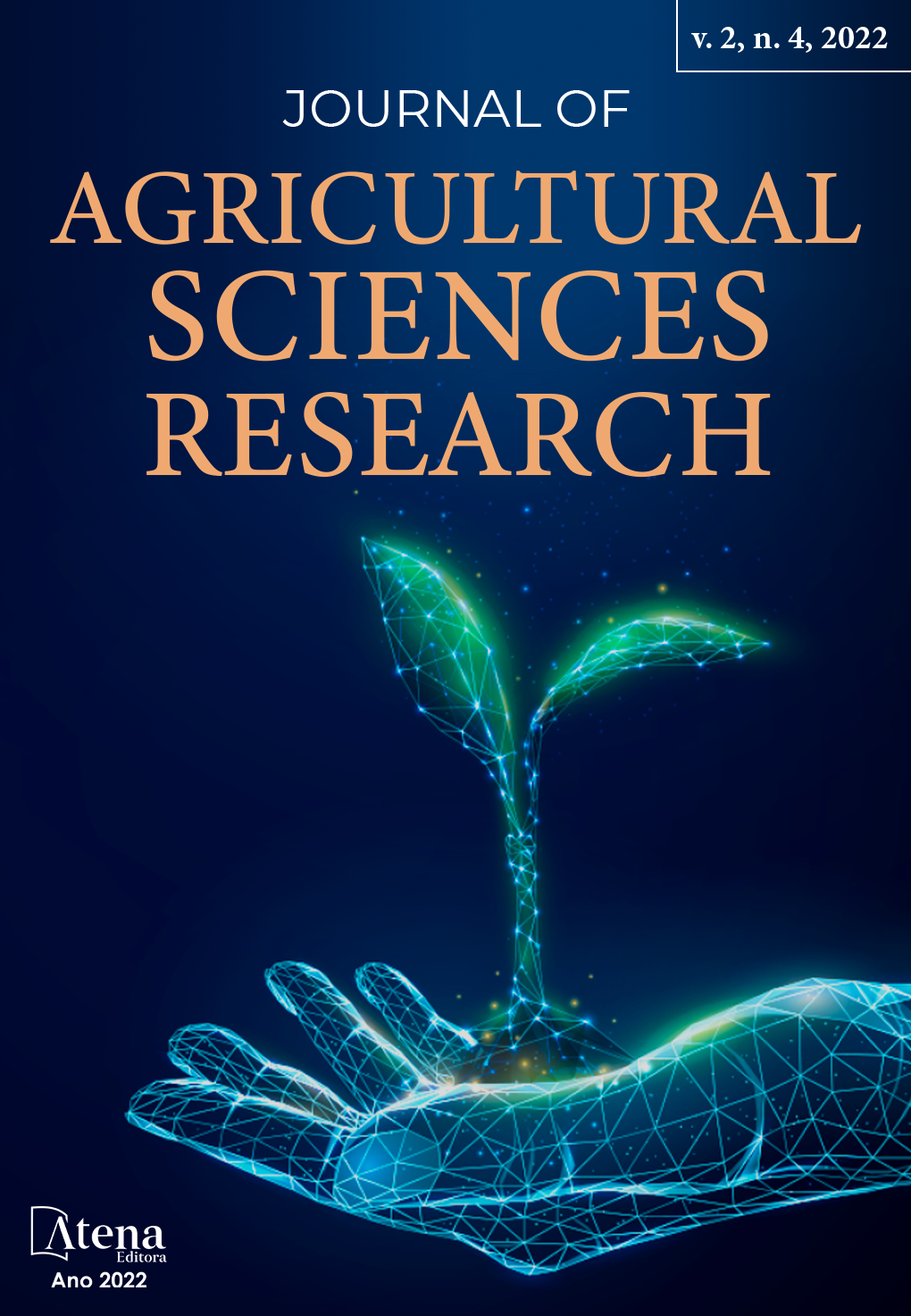
BEHAVIOR OF SOYBEAN PLANTATIONS SEED IN A SURFACE REFORM AREA AND SUBMITTED TO COINOCULATION AND INOCULATION IN THE FURROW
With the objective of evaluating biological nitrogen fixation parameters and production components in soybean plantations submitted to different Treatments with biological inoculants, an experiment was installed in the 2018-19 harvest in Tanabi-SP, in an area of sugarcane reform. The same was carried out in the scheme of demonstrative strips or parcels being implemented as a 7 x 3 factorial, in the experimental design of randomized blocks with three replications. The sources of variance in the analysis of variance were composed of seven Plantations BRS 7380 RR, TMG 7063 IPRO, TMG 7062 IPRO, SYN 13610 IPRO, SYN 15640 IPRO, M 6410 IPRO and NS 7007 IPRO and three Treatments: coinoculation and furrow inoculation of sowing, and control without inoculation. In R1, the total number of nodules (NNODT), nitrogen content in the shoot (TNPA) and total dry mass of nodules (MSNODT) were evaluated and at harvest, in R8, grain yield (PG) and mass thousand grains (MMG). Based on the results obtained, there was a different behavior between the tested Plantations, and the cv. BRS 7380RR stood out with the highest mean of NNODT (27.81 nodules plant-1); SYN 15640 IPRO had the highest mean TNPA (42.03 g.kg--1) and the two TMG Plantations stood out, showing higher mean values for MSNNOT and MMG. As for PG, the Plantations TMG 7063 IPRO and M 6410 IPRO did not differ statistically from each other and stood out, obtaining the best productive performances of, respectively, 2370.40 and 2264.80 kg ha-1. The practice of co-inoculation in the sulcus promoted increments in TNPA and PG; and had statistical equivalence with the inoculation for the other parameters and production components evaluated. It can be concluded that 71.43% of the Plantations tested in the present work can be used in conjunction with the practice of co-inoculation and/or inoculation in the sowing furrow; the plantation M 6420 IPRO to obtain high PG must be used in conjunction with the practice of inoculation in the sowing furrow; on the other hand, it is recommended to use the plantation BRS 7380 RR in association with the practice of co-inoculation to obtain higher PG.
BEHAVIOR OF SOYBEAN PLANTATIONS SEED IN A SURFACE REFORM AREA AND SUBMITTED TO COINOCULATION AND INOCULATION IN THE FURROW
-
DOI: 10.22533/at.ed.973242202056
-
Palavras-chave: varieties; soybean-cane succession; grain yield, Azospirillum
-
Keywords: varieties; soybean-cane succession; grain yield, Azospirillum
-
Abstract:
With the objective of evaluating biological nitrogen fixation parameters and production components in soybean plantations submitted to different Treatments with biological inoculants, an experiment was installed in the 2018-19 harvest in Tanabi-SP, in an area of sugarcane reform. The same was carried out in the scheme of demonstrative strips or parcels being implemented as a 7 x 3 factorial, in the experimental design of randomized blocks with three replications. The sources of variance in the analysis of variance were composed of seven Plantations BRS 7380 RR, TMG 7063 IPRO, TMG 7062 IPRO, SYN 13610 IPRO, SYN 15640 IPRO, M 6410 IPRO and NS 7007 IPRO and three Treatments: coinoculation and furrow inoculation of sowing, and control without inoculation. In R1, the total number of nodules (NNODT), nitrogen content in the shoot (TNPA) and total dry mass of nodules (MSNODT) were evaluated and at harvest, in R8, grain yield (PG) and mass thousand grains (MMG). Based on the results obtained, there was a different behavior between the tested Plantations, and the cv. BRS 7380RR stood out with the highest mean of NNODT (27.81 nodules plant-1); SYN 15640 IPRO had the highest mean TNPA (42.03 g.kg--1) and the two TMG Plantations stood out, showing higher mean values for MSNNOT and MMG. As for PG, the Plantations TMG 7063 IPRO and M 6410 IPRO did not differ statistically from each other and stood out, obtaining the best productive performances of, respectively, 2370.40 and 2264.80 kg ha-1. The practice of co-inoculation in the sulcus promoted increments in TNPA and PG; and had statistical equivalence with the inoculation for the other parameters and production components evaluated. It can be concluded that 71.43% of the Plantations tested in the present work can be used in conjunction with the practice of co-inoculation and/or inoculation in the sowing furrow; the plantation M 6420 IPRO to obtain high PG must be used in conjunction with the practice of inoculation in the sowing furrow; on the other hand, it is recommended to use the plantation BRS 7380 RR in association with the practice of co-inoculation to obtain higher PG.
-
Número de páginas: 24
- Everton Luis Finoto
- Elaine Cristine Piffer Gonçalves
- José Antonio Alberto Da Silva
- Marcelo Henrique De Faria
- Fernando Bergantini Miguel
- Regina Kitagawa Grizotto
- Anita Schmidek
- Ivana Marino Bárbaro-Torneli


